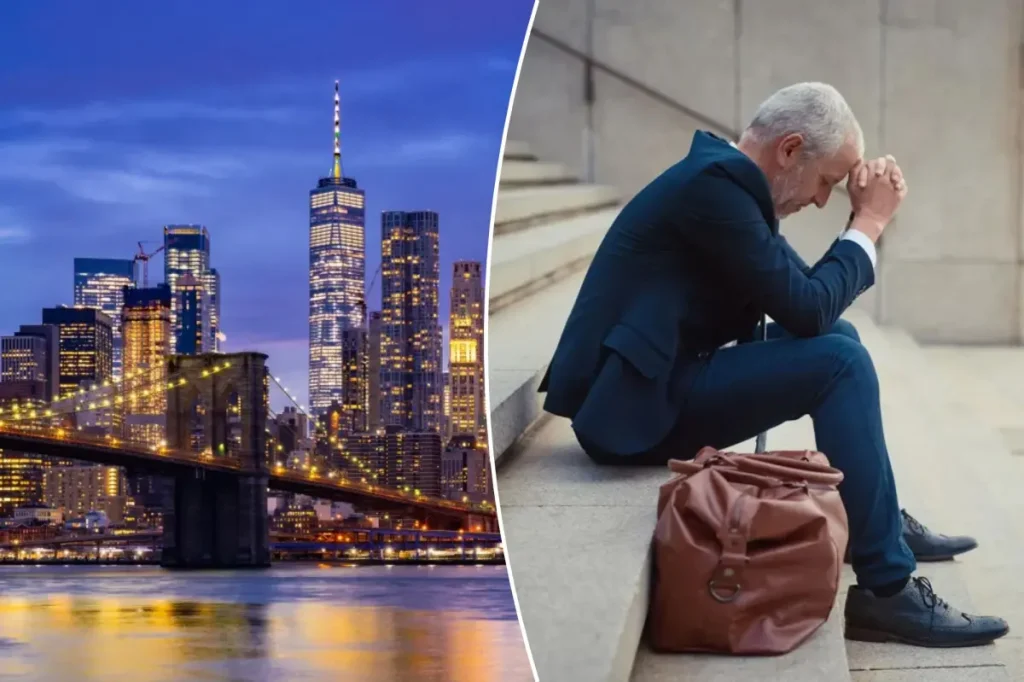New York: The World’s Most Stressed-Out City
In a striking contrast of recognition, New York City finds itself simultaneously celebrated as the world’s second-best city while bearing the unfortunate distinction of being named the most stressed-out metropolis on the planet. This dichotomy perfectly encapsulates the complex reality of life in the Big Apple – a place of extraordinary cultural vibrancy and opportunity that comes with equally extraordinary pressures. A comprehensive study by finance company Remitly examined major global cities across several stress indicators: cost of living, crime rates, traffic congestion, pollution levels, and healthcare accessibility. When these factors were compiled into an overall “stress score” out of 10, New York topped the list with a concerning 7.59 – the highest score recorded in the study. While New York has long been lauded for its dynamic cultural economy and ambitious urban infrastructure projects, these achievements appear to come at a significant cost to the wellbeing of those who call the city home.
The primary driver behind New York’s high stress ranking is undoubtedly its astronomical cost of living, which has become increasingly unbearable for many residents. A 2025 Cornell University study confirms that most New Yorkers identify rising living costs as their foremost concern – a sentiment validated by recent market data. November saw Manhattan’s median rent break historical records, climbing 7.6% year over year to reach a staggering $4,625 according to analyses by Miller Samuel Inc and Douglas Elliman. Beyond housing, inflation has hit New Yorkers particularly hard across essential expenses including groceries, utilities, and insurance. These compounding financial pressures led Remitly to assign New York City a maximum score of 100 for living expenses – the highest possible rating in their methodology. The severity of this situation becomes even more apparent when compared to other global cities; Athens, Greece, scored a more moderate 56.6 on the same scale, while Mexico City registered a relatively affordable 44.4. The financial strain of simply existing in New York has created a persistent backdrop of stress that colors daily life for millions of residents across all five boroughs.
Perhaps more surprising than New York’s top position is the city that follows closely behind. Dublin, Ireland – often romanticized as a charming European capital of pubs, poets, and laid-back culture – secured the second spot with a stress score of 7.55, challenging popular perceptions of the Irish capital. Like New York, Dublin faces growing affordability issues that have placed significant pressure on locals. Housing costs have skyrocketed in recent years, transforming what was once considered a reasonably priced European destination into one of the continent’s most expensive cities. Adding to Dublin’s stress factors is its severe traffic congestion – among the worst in Europe according to the study. Residents typically spend an average of 32 minutes and 45 seconds traveling just 10 kilometers (6.2 miles), a frustratingly inefficient commute that consumes valuable time and energy. The similarities between New York and Dublin highlight how rapid urban development and economic success can sometimes outpace infrastructure and housing capabilities, creating parallel stress factors despite their different histories and cultures.
The global stress rankings continue with Mexico City securing third place, followed by Manila and London to complete the top five most stressed cities worldwide. Each of these metropolises faces unique combinations of the measured stress factors, though common threads emerge across these urban centers: housing affordability crises, transportation challenges, and the various pressures that come with dense population concentrations. Mexico City struggles with severe air pollution and traffic congestion, while Manila contends with infrastructure limitations and overcrowding. London, like New York and Dublin, has seen housing costs reach levels that exclude many residents from homeownership or comfortable living arrangements. These rankings illustrate that while stress factors may manifest differently across cultural and geographic contexts, the experience of urban stress transcends national boundaries, particularly in major global cities that serve as economic and cultural hubs for their respective regions.
In stark contrast to these high-stress environments, the study identified Eindhoven in the Netherlands as the world’s least stressful city, earning a remarkably low score of just 2.34 out of 10. Another Dutch city, Utrecht, secured the second position on this more desirable end of the ranking. The success of these Dutch cities in creating low-stress urban environments appears to stem from several key factors: excellent healthcare accessibility, low crime rates, and minimal pollution levels. The Netherlands has long prioritized quality of life in its urban planning, with particular emphasis on sustainable transportation (notably cycling infrastructure), efficient public services, and balanced work-life policies. These cities demonstrate that urban living doesn’t inherently need to produce high stress levels – with thoughtful planning and appropriate investment in public resources and infrastructure, cities can cultivate environments that support rather than strain resident wellbeing.
These findings raise important questions about urban development priorities and what truly makes a city “great.” While New York’s cultural offerings, economic opportunities, and iconic status continue to draw people from around the world, the psychological and physical toll of its high-stress environment cannot be ignored. The contrast between the Netherlands’ low-stress cities and high-pressure metropolises like New York and Dublin suggests different models of urban success are possible. As cities worldwide continue to grow and evolve, policymakers face critical choices about prioritizing factors that contribute to resident wellbeing alongside economic development and cultural vibrancy. The true measure of a city’s greatness perhaps lies not just in its global influence, cultural achievements, or economic power, but equally in its ability to provide an environment where residents can thrive without excessive stress. For those living in today’s high-pressure urban centers, the question remains whether their cities will adapt to better balance ambition with wellbeing, or if the price of metropolitan life will continue to include extraordinary levels of stress.



